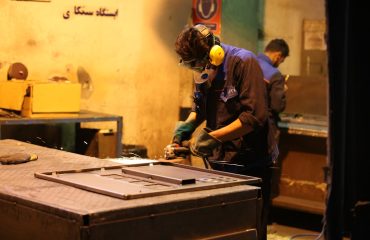body {
font-family: sans-serif;
line-height: 1.6;
}
h1, h2, h3 {
color: #333;
}
Navigating the world of steel certifications can feel like traversing a complex maze. The CE marking, a crucial indicator of conformity with European Union health, safety, and environmental protection legislation, is particularly important for steel products destined for the European market. This comprehensive guide will unravel the intricacies of CE certification procedures for steel, ensuring you understand the requirements and processes involved.
Understanding the CE Marking for Steel Products
The CE marking is not a quality mark; it’s a declaration of conformity. It signifies that a product meets the essential requirements of relevant EU directives and regulations. For steel, this often involves directives related to construction products (Construction Products Regulation – CPR), machinery safety, and potentially others depending on the specific application of the steel. The CE marking allows free movement of the product within the European Economic Area (EEA). Simply put, it’s a passport to the European market for compliant steel products.
Essential Requirements and Applicable Directives
The specific directives and regulations applicable to your steel product depend heavily on its intended use. For construction products, the CPR (Regulation (EU) No 305/2011) is paramount. This regulation mandates that manufacturers declare the performance of their products through a Declaration of Performance (DoP). The DoP includes essential characteristics relevant to the intended use, based on harmonized standards. Other directives, such as those related to machinery safety (2006/42/EC), may also apply if the steel is a component of a machine. Identifying the correct directives is the crucial first step in the certification process.
Conformity Assessment Procedures for Steel
The CPR outlines different conformity assessment routes, or procedures, depending on the complexity of the product and the associated risks. These routes range from simple self-declaration for simpler products to more complex procedures involving Notified Bodies (NBs). NBs are independent organizations designated by a Member State to assess the conformity of products. The choice of procedure is determined by the manufacturer based on the product’s classification and the applicable harmonized standards. Common procedures include: System 1 (internal production control) and System 4 (production control plus factory production control). More complex steel products or those with higher risk profiles might require involvement of a Notified Body, leading to more rigorous testing and verification.
Testing and Verification: Ensuring Compliance
Regardless of the chosen conformity assessment procedure, testing and verification are crucial. This involves demonstrating that the steel product meets the specified performance characteristics outlined in the relevant harmonized standards and the DoP. Testing might include mechanical tests (tensile strength, yield strength, elongation), chemical analysis, and other tests specific to the steel’s properties and intended use. Independent testing laboratories often conduct these tests, providing unbiased results. The results are then used to support the DoP and demonstrate compliance with the essential requirements of the applicable directives.
The Declaration of Performance (DoP) and CE Marking Application
The Declaration of Performance (DoP) is a key document for steel products under the CPR. It’s a formal declaration by the manufacturer stating that the product conforms to the essential requirements. The DoP includes details such as the product’s identification, intended use, declared performance characteristics, and the applicable harmonized standards. Once the manufacturer has verified that the product meets the essential requirements through testing and relevant conformity assessment procedures, the CE marking can be affixed to the product. The CE marking should be accompanied by the manufacturer’s identification and often the Notified Body identification number if a Notified Body was involved in the conformity assessment process. The DoP must be available to the end-user upon request.
Successfully navigating the CE certification process for steel requires careful attention to detail and a thorough understanding of the relevant regulations. Consulting with experts and utilizing the services of Notified Bodies where necessary can ensure a smooth and compliant process. Remember, the CE marking is not merely a symbol; it’s a statement of commitment to safety, quality, and compliance within the European market.
SEO-Friendly Tags:
- CE Marking Steel
- Steel CE Certification
- Construction Products Regulation (CPR) Steel
- Steel Product Certification Europe
- Notified Body Steel Certification




